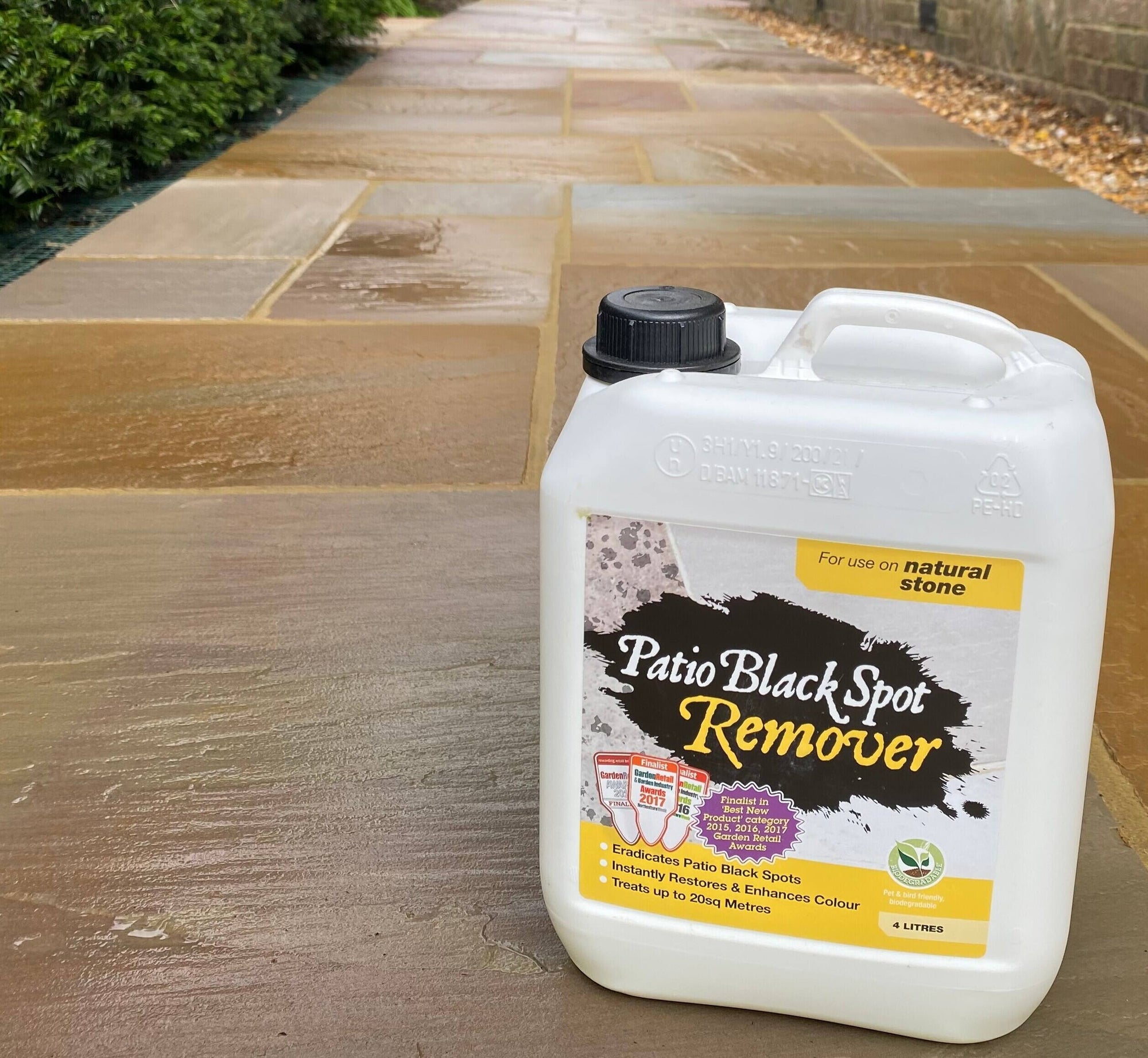Indian sandstone brings warmth, colour, and natural character to outdoor spaces. It’s no surprise we find it so appealing for everything from patios and pathways to driveways and seating areas. Thanks to its naturally weathered finish and variety of tones, it offers a rustic charm that doesn’t cost a fortune and looks just as good in contemporary settings as it does in traditional ones.
In our experience working with this material, it consistently delivers the balance between practicality and style. It’s versatile, low-maintenance, and ages gracefully. Whether we’re working with the popular Kandla Grey, the honeyed warmth of Mint, or the blended tones of Bronte, we’re always impressed by the individuality of each slab and the overall aesthetic once laid.
Here’s our complete guide to Indian sandstone paving – from what it is, to its benefits, maintenance tips and how best to use it in your own outdoor space.
What is Indian Sandstone?
Indian sandstone is a natural stone created over millions of years through the gradual cementing of quartz grains under extreme heat and pressure. The process, involving sedimentary layers submerged under water or compressed underground, gives rise to sandstone rich in character and variation.
What makes Indian sandstone distinctive is its naturally veined structure, a direct result of India’s diverse geology. Each slab tells its own story – no two pieces are identical, which adds to the visual depth and uniqueness when used across larger paved areas.
Where Does Indian Sandstone Come From?
As the name suggests, this stone is quarried in India. Around 90% of the country’s sandstone reserves are located in Rajasthan, particularly around the regions of Kota, Bundi, and Jodhpur. These areas have become renowned globally for producing high-quality sandstone in various colours and finishes.
Other Indian states such as Uttar Pradesh, West Bengal, Punjab, and Tamil Nadu also contribute to sandstone production, although on a smaller scale. The widespread availability makes this stone both affordable and dependable, without compromising on appearance.
The Benefits of Indian Sandstone Paving
Durability
In areas subject to both high footfall and British weather, Sandstone holds up incredibly well. Its dense quartz content ensures a hardwearing surface that if maintained correctly, resists cracking, even under pressure. It’s suitable for patios and paths, handling everything from prams and pets to garden furniture and family foot traffic.
Natural Non-Slip Surface
Safety is a big priority in any outdoor setting. One of the main advantages of Indian sandstone is its naturally rough surface, which offers grip even in wet weather. We often recommend it for families with children or for sloping gardens where slip-resistance is especially important.
Attractive Appearance
From a visual standpoint, Indian sandstone is truly eye-catching. Whether you prefer the soft greys of Kandla, the golden creams of Mint, or the mixed palette of Bronte, there’s a colour to suit every garden design. Its mineral-rich composition produces a glassy, subtly shiny effect that enhances its visual appeal.
If maintained correctly, its colour tends not to fade over time – ideal for clients looking for longevity. It can add serious 'kerb appeal' when used in the front garden or front path, which is a point frequently raised by estate agents in property listings.
Cost-Effective
Despite its upmarket appearance, Indian sandstone remains an affordable choice, especially when compared to granite or limestone. Riven sandstone – which splits naturally along sedimentary layers – is particularly good value, and adds a handcrafted, textured feel that looks more expensive than it is. Riven sandstone is also easier to maintain, compared to sawn surfaces.
For larger gardens or commercial spaces, cost can be a significant concern. Indian sandstone delivers great results without overspending.
Low Maintenance
We’ve found Indian sandstone to be one of the more manageable materials when it comes to ongoing maintenance. Provided the paving is properly installed on a well-prepared base, it won’t shift, sink, or suffer excessive staining.
Routine sweeping, occasional washing, and some preventative maintenance applied annually are usually all that’s needed to keep it looking fresh for years.



